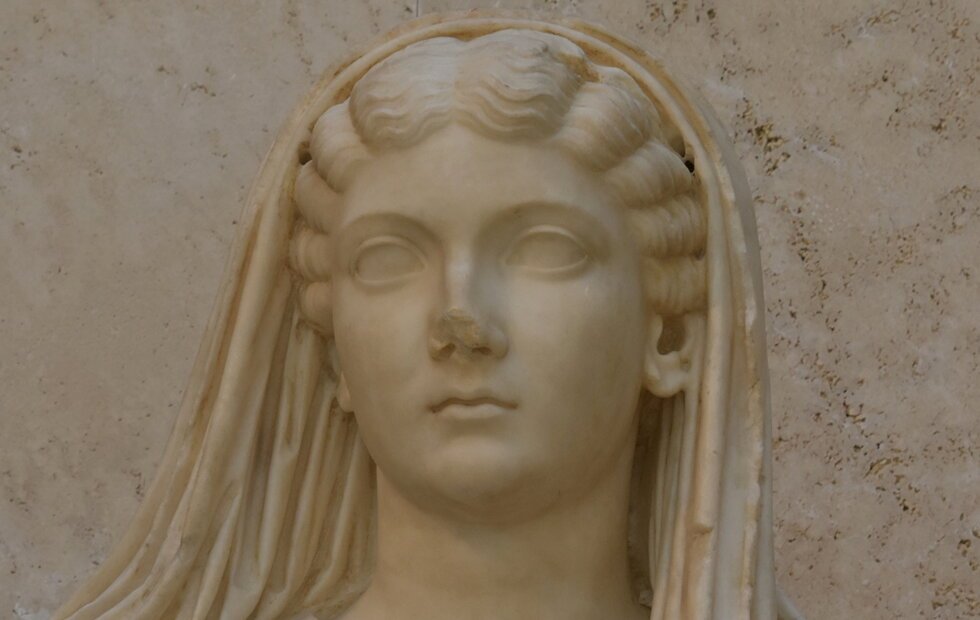Early Life and Background
Princess Drusilla of Mauretania the Elder was born around 5 BC at Caesarea, now Cherchell, Algeria. Juba II, a Numidian prince educated in Roman ways, co-ruled Mauretania with Cleopatra Selene II, the daughter of Cleopatra VII and Mark Antony. Even though Drusilla was little, her heritage placed her in the complex web of Roman, Ptolemaic, and North African aristocracy. Drusilla may have been a reference to Emperor Augustus’ wife Livia Drusilla or her son, Nero Claudius Drusus, showing the family’s Roman origin.
Drusilla was raised according to royal standards, combining Roman and Berber customs. This cultural synthesis layered her identity, signifying the merger of civilisations. Drusilla’s early death prevented her from marrying or becoming public, limiting her historical impact. She left little political or cultural remains, except for genealogical records and modern historians who describe her as a historical curiosity rather than a person of influence.
| Aspect | Details |
|---|---|
| Birth | Circa 5 BC in Caesarea (modern Cherchell, Algeria) |
| Parents | King Juba II and Queen Cleopatra Selene II |
| Named After | Likely Livia Drusilla or Nero Claudius Drusus |
| Historical Significance | Limited due to early death; prominent familial ties |
| Cultural Background | Romanized upbringing with Berber and Greek traditions |
Family and Lineage
Drusilla of Mauretania the Elder was wrapped up in a fascinating royal family. Her father, Juba II, was a successful ruler, scholar, and writer. Juba II married Cleopatra Selene II, a descendant of the Ptolemaic dynasty and Cleopatra VII, and they co-ruled Mauretania as a Roman client kingdom, where she influenced governance and infrastructure development.
Ptolemy of Mauretania, Drusilla’s brother, was the last independent Mauretan monarch before Caligula executed him. Ptolemy’s rule from 23 to 40 CE ended his family’s direct power, emphasising their royal precarity. The other siblings’ limited records suggest either their lack of prominent positions or early deaths like Drusilla.
As a great-granddaughter of Cleopatra VII and Mark Antony, Drusilla is a first cousin once removed to Caligula, Claudius, and Nero. Her family was linked to the Julio-Claudian dynasty, adding to their historical significance. This mix of Roman, Berber, and Greek origins shows the complex interaction of ancient cultures and Drusilla’s potential as a cultural bridge, despite her brief life.
| Family Member | Role/Notable Info |
|---|---|
| Juba II | Father, scholar-king of Mauretania |
| Cleopatra Selene II | Mother, co-ruler with Ptolemaic heritage |
| Ptolemy of Mauretania | Brother, ruled 23–40 CE, executed by Caligula |
| Other Siblings | Existence likely but details sparse |
| Extended Lineage | Great-granddaughter of Cleopatra VII and Mark Antony; ties to Julio-Claudian dynasty |
Historical context and cultural impact
Drusilla of Mauretania the Elder’s family connections, not her achievements, shaped culture and history. Drusilla was raised in a mixed home of Roman, Berber, and Greek traditions, preparing her for a role she never played. Her parents, especially Cleopatra Selene II, helped Mauretania develop economically and architecturally, including building Caesarea.
Throughout history, royal women have been eclipsed by men or died prematurely, as Drusilla. Her presence is mostly known via genealogical research, which show how short many royal women’s lives were. Her existence is mostly an analogy for the lack in historical records of women, despite academic interest.
Drusilla represents the intricacies of old dynasty politics, where positions were insecure and family ties influenced fate more than personal achievement. Her family’s integration into Roman culture and politics shows how royal houses in the ancient Mediterranean struggled to retain sovereignty under Roman rule.
| Cultural Aspect | Details |
|---|---|
| Parental Influence | Prosperous reign; blend of cultures |
| Role in Historiography | A gap representing lost female figures in ancient history |
| Cultural Identity | Fusion of Roman, Berber, and Greek traditions |
| Academic Interest | Focused on genealogical significance and historical gaps |
FAQ
Who were Drusilla’s parents?
King Juba II and Queen Cleopatra Selene II, respected Mauretani kings with Roman, Berber, and Egyptian ties, were Drusilla’s parents.
Did Drusilla have any siblings?
Drusilla had at least one brother, Ptolemy of Mauretania, and possibly others, but historical records are scarce.
Drusilla’s historical significance?
Drusilla’s dynasty had Roman, Ptolemaic, and North African origins, making her significant.
Why is Drusilla’s history small?
She presumably died young, never marrying or entering public life.
Which culture did Drusilla’s family come from?
Drusilla was born into a culturally varied royal family that merged Roman schooling with Berber and Greek customs, mirroring her parents’ authority.



